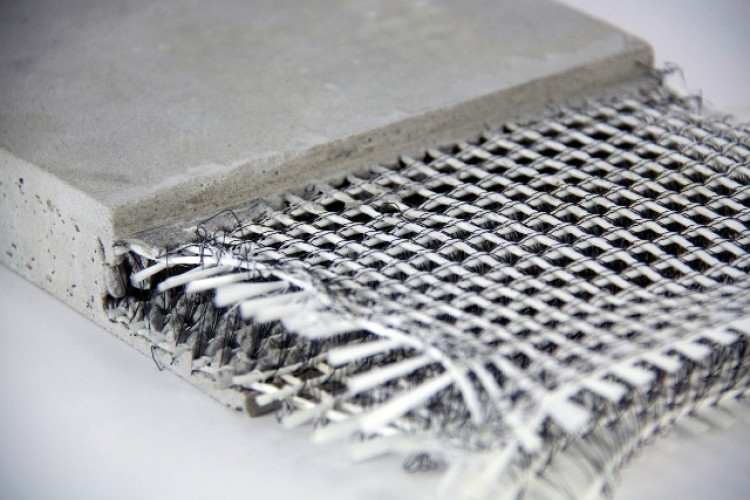Composites: The Future of Lasting Building Products
Wiki Article
Unlocking the Ecological Benefits of Recycled Composites in Building And Construction and Style
In the world of building and layout, the utilization of recycled compounds holds substantial guarantee for boosting sustainability techniques and decreasing ecological influence (composites). By incorporating these ingenious products, there is a potential to attend to crucial problems such as waste reduction, power conservation, and a reduction in carbon impact. The change towards a much more lasting future in these sectors pivots on unlocking the full potential of recycled compounds. This conversation will certainly discover the multifaceted benefits and difficulties connected with incorporating recycled composites into building and construction and style, using a glance into the transformative opportunities that lie ahead.
Ecological Influence Decrease
The decrease of environmental influence via making use of recycled composites in construction and layout plays an essential role in lasting methods. By integrating recycled composites right into building products, the building market can considerably decrease its carbon impact and contribute to a more green future. These lasting materials, made from repurposed plastics, timber fibers, or other recycled elements, supply a feasible alternative to typical building materials without endangering on high quality or sturdiness.
Recycled composites assist divert waste from garbage dumps and decrease the demand for extracting raw products, thus preserving natural sources. Furthermore, the production process of these compounds typically eats less power and discharges fewer greenhouse gases contrasted to producing virgin products (composites). This shift towards making use of recycled composites not just reduces environmental injury but likewise promotes a round economic climate by encouraging the reuse of products that would certainly otherwise be disposed of
Waste Reduction
With a focus on reducing waste in building and construction and design, the assimilation of recycled composites supplies a sustainable solution to lower environmental impact. Waste reduction is an important facet of sustainable methods, and using recycled compounds presents a chance to achieve this objective properly. By utilizing materials that have already offered their first objective, such as recycled plastics or reclaimed wood fibers, the building and construction and layout sectors can considerably minimize the quantity of waste created and sent out to land fills.Recycled composites have the prospective to divert considerable quantities of waste from standard disposal approaches, adding to an extra round economic situation where resources are utilized efficiently. Furthermore, the manufacturing process of recycled composites usually eats much less power and produces fewer emissions compared to virgin materials, further reducing the ecological footprint of building and construction and design tasks.
Applying waste reduction approaches with the consolidation of recycled composites not only helps in preserving natural deposits however likewise promotes an extra lasting method to building and developing for a greener future.
Power Preservation
Integrating recycled composites not just lessens waste in building and design but additionally plays an important function in enhancing power preservation practices within the sector. Making use of recycled composites in building can substantially add to power preservation through numerous ways. Firstly, the production of virgin materials generally calls for significant power inputs, whereas utilizing recycled composites eats less power, consequently decreasing total energy intake. Furthermore, including recycled composites can add to better insulation residential or commercial properties in structures, decreasing the demand for excessive home heating or air conditioning, and as a result decreasing energy use for environment control. The light-weight nature of numerous recycled browse this site composites can lead to lighter frameworks, requiring less power for transport and installation. By promoting using recycled compounds in construction and style, the sector can make significant strides towards accomplishing power performance and reducing its carbon footprint, eventually adding to a more sustainable developed atmosphere.Carbon Impact Reduction
Enhancing sustainability techniques via the use of recycled composites in construction and layout considerably reduces the carbon impact of the market. By integrating recycled materials right into the manufacturing of composites, the need for virgin sources reduces, resulting in lower power intake and greenhouse gas exhausts connected with standard manufacturing procedures. This reduction in carbon footprint is critical in combating environment modification and promoting an extra ecologically friendly strategy to building and design.The carbon impact reduction accomplished via the adoption of recycled composites straightens with the global push in the direction of sustainable techniques and the decrease of commercial exhausts. Ultimately, by focusing on the assimilation of recycled composites, the market can make considerable strides in lowering its carbon footprint and contributing to an extra lasting future.
Lasting Future
The combination of recycled check this compounds in construction and layout not only addresses prompt environmental concerns yet likewise lays a strong foundation for a lasting future in the market. By incorporating recycled compounds into building products and products, the construction and layout markets can dramatically decrease their reliance on virgin sources, causing a more circular economic situation. This shift towards sustainability is important for mitigating the ecological influence of conventional building and construction practices, which commonly result in high levels of waste generation and source exhaustion.

Final Thought
To conclude, recycled compounds use considerable environmental benefits in building and style by decreasing environmental impact, minimizing waste, conserving power, lowering carbon impact, and promoting a sustainable future. Embracing making use of recycled compounds can add to a much more environmentally-friendly method to building and layout, inevitably leading to a more lasting and greener future for all.The reduction of environmental influence with the use of recycled composites in building and construction and layout plays a critical duty in lasting methods.With a focus on decreasing waste in building and construction and style, the integration of recycled compounds uses a sustainable remedy to decrease environmental influence. By advertising the use of recycled compounds in building and design, the market can make significant strides in the direction of accomplishing energy efficiency and reducing its carbon impact, inevitably adding to a more lasting built environment.

Report this wiki page